

Valley of the Kings

Valley of the Kings
The west bank at Luxor is one of the most important archaeological sites in the world. It is much more than what we refer to as the Valley of the Kings, though many have called the whole of the area by that name.
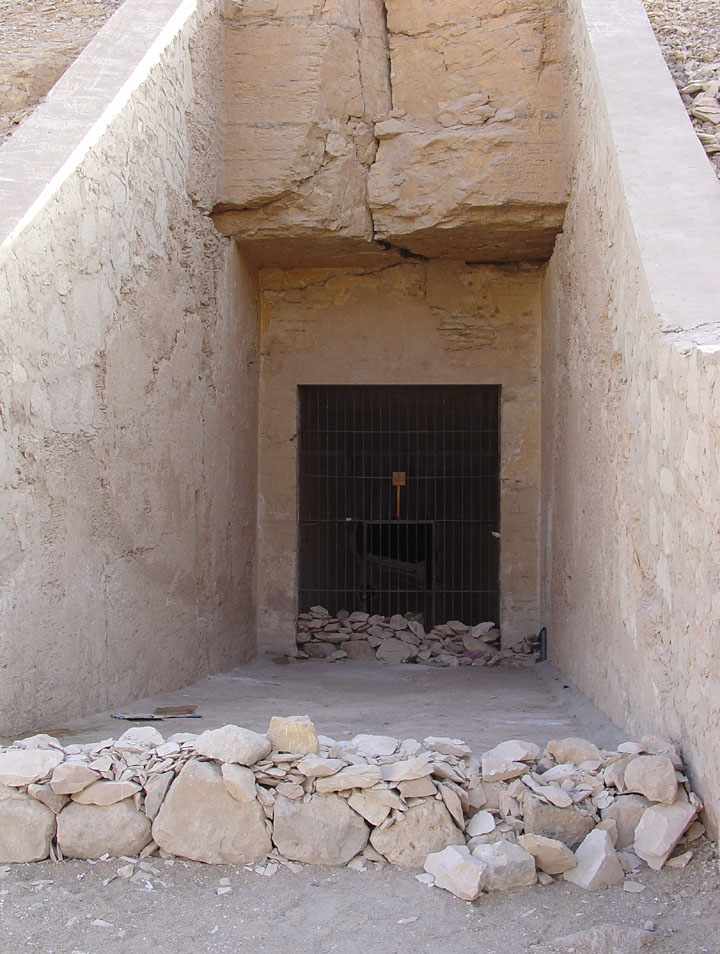
entrance to a tomb
(not now open to the public)
The Valley of the Kings, in Thebes, is the burial place of the pharaohs of the New Kingdom, 18th, 19th, and 20th Dynasties. To date, more than 62 tombs have been identified.
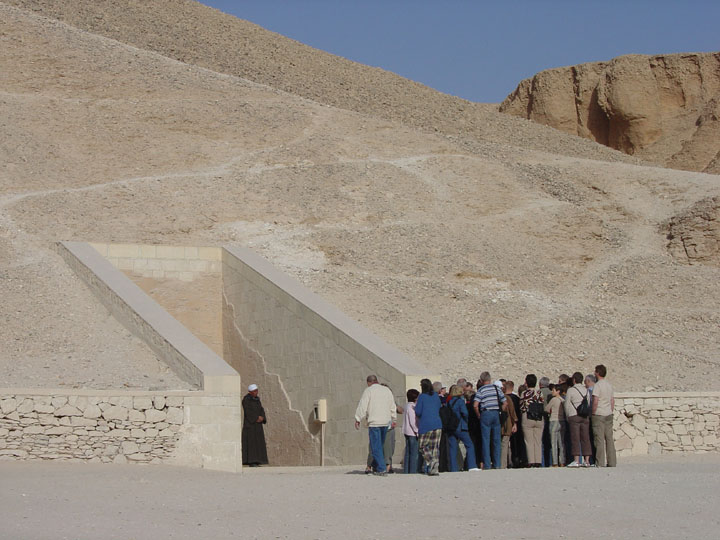
waiting to view a tomb
Most of the tombs were cut into the limestone following a similar pattern:
three corridors, an antechamber and a sunken sarcophagus chamber. These
catacombs were harder to rob and were more easily concealed. The switch to
burying the pharaohs within the valley instead of pyramids, was intended to
safeguard against tomb robbers.
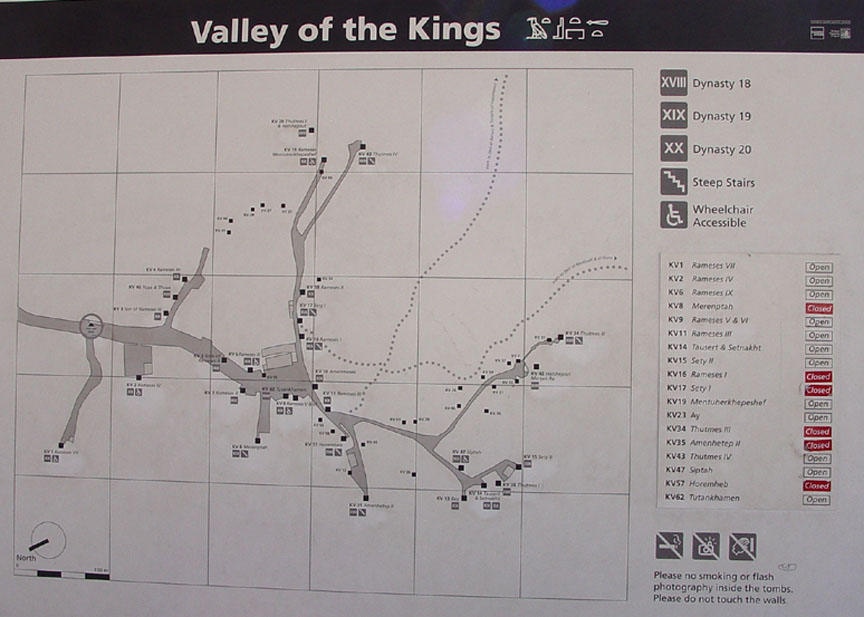
map showing the tombs now open to the public
Construction of a tomb usually lasted six years, beginning with each new reign.
The design of each tomb varies throughout the period in which they were built
and it is interesting to see the progression of shape and decoration from the
earliest ones to the later Ramesside tombs.
Eastern Valley
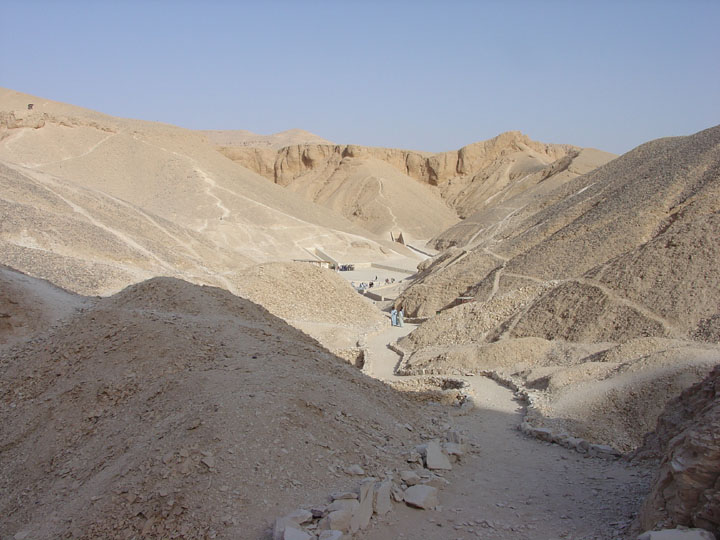
view from high in the Eastern Valley
where you find tombs 19 and 43
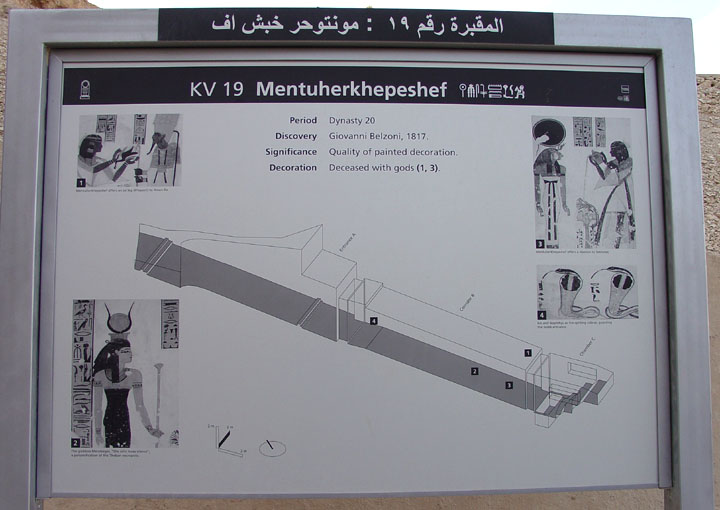
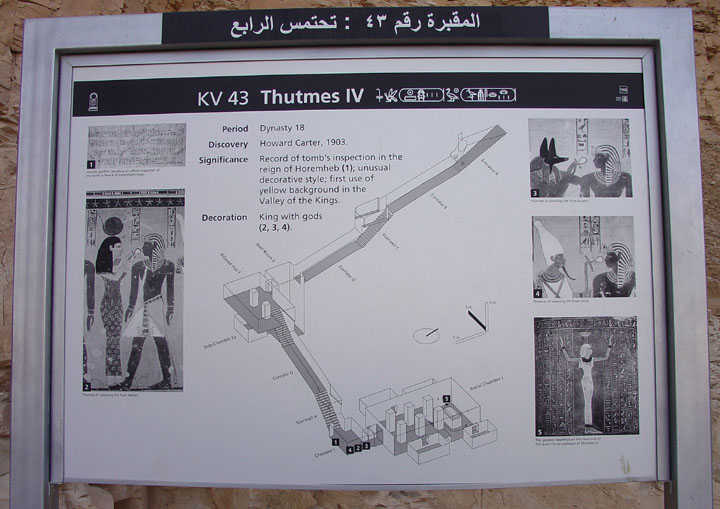
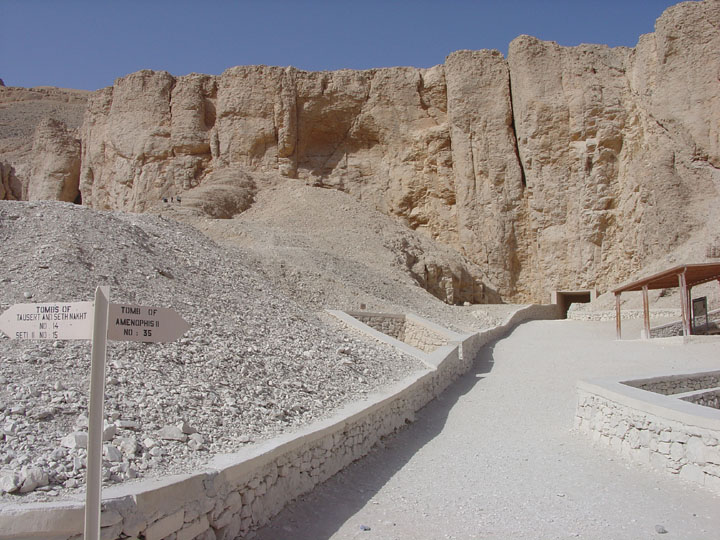
The text in the tombs are from the Book of the Dead, the Book of the Gates and
the Book of the Underworld.
Tomb of Rameses VI (Tomb 9)
has been open and visited since early antiquity
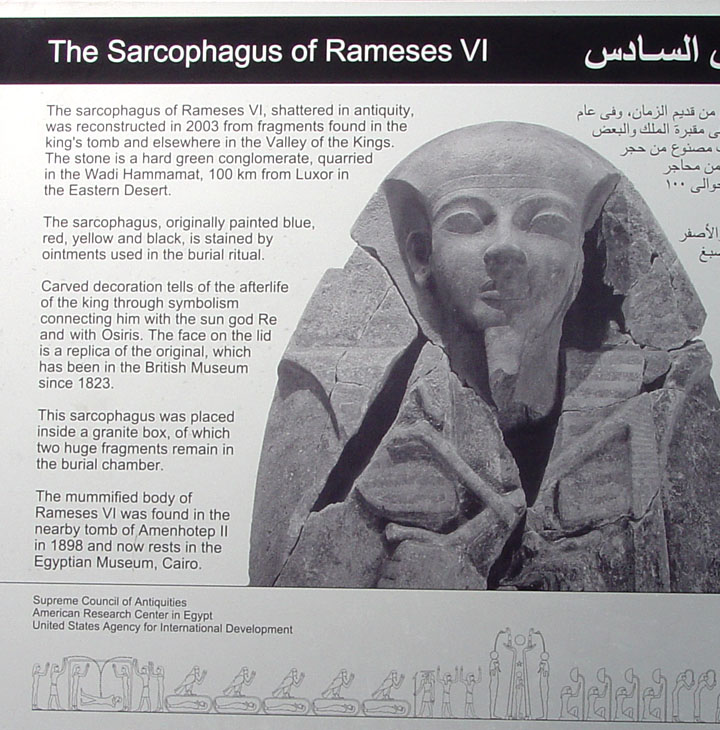
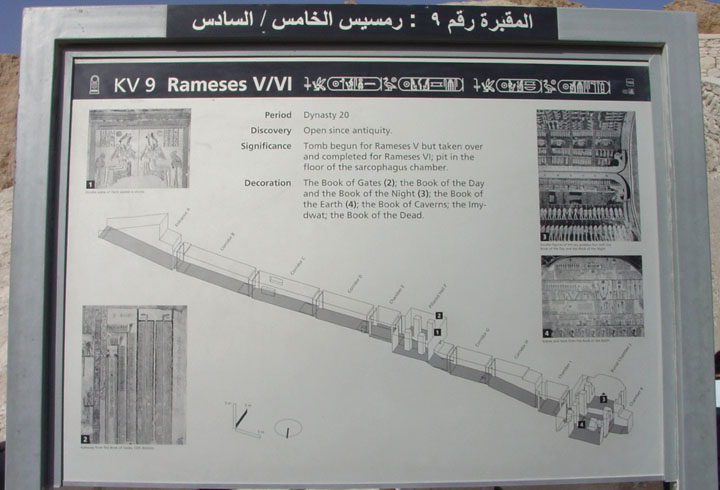
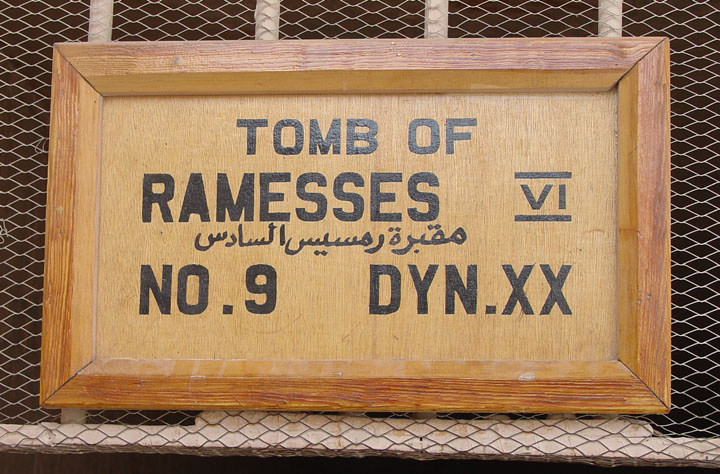
The early excavation of this tomb forestalled the discovery of Tutankhamun’s much smaller, earlier tomb that lay below it. The tomb was actually begun for the ephemeral Ramses V (1147—1143 BC) and continued] by Ramses VI (1143—1136 BC), with both pharaohs apparently buried here.
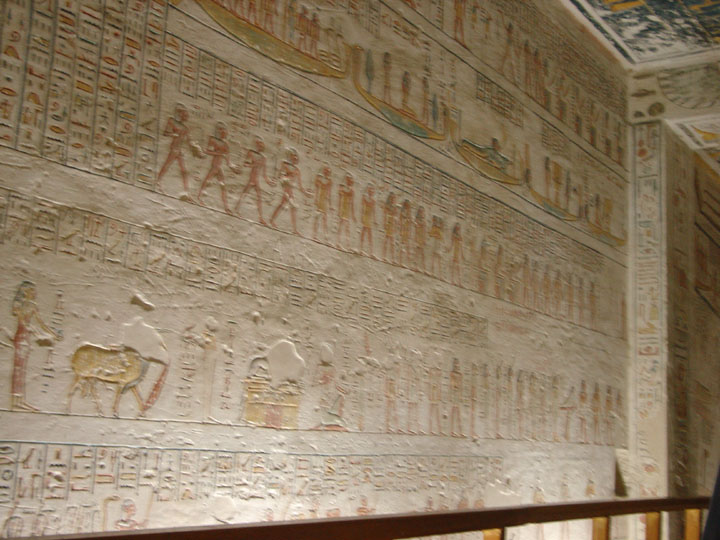
Its decoration has an emphasis on astronomical scenes and texts, which include the Book of Gates, Book of Caverns, Books of the Heavens and for the first time, Book of the Earth.
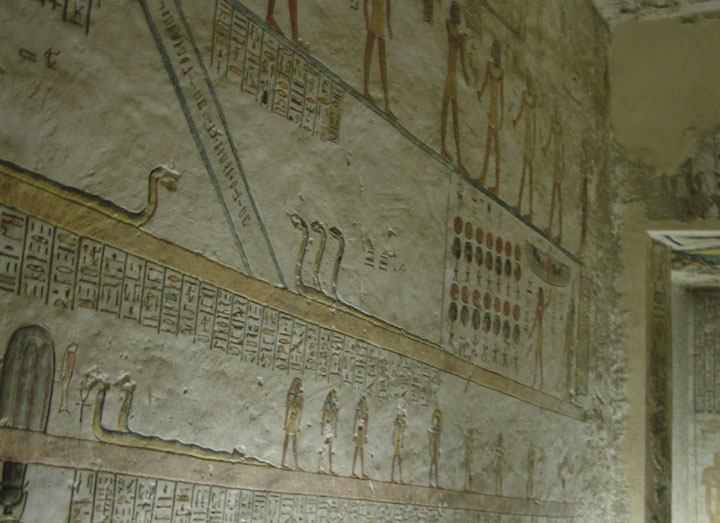
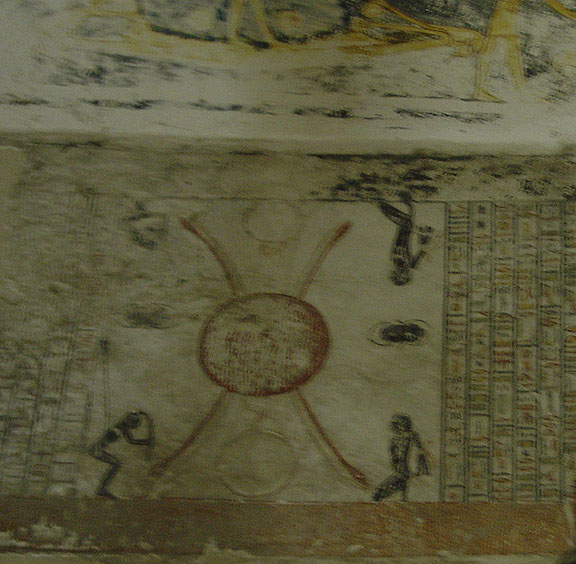
A superb double image of Nut decorates the ceiling of the burial chamber, where only part of the sarcophagi remain. Following the tomb’s ransacking a mere 20 years after burial, the mummies of both Ramses V and Ramses VI were moved to Amenhotep II’s tomb where they were found in 1898 and taken to Cairo.
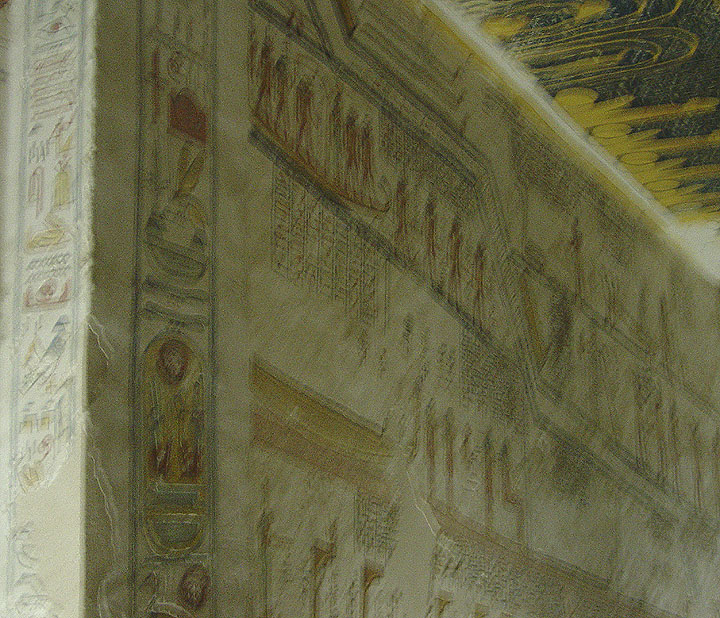
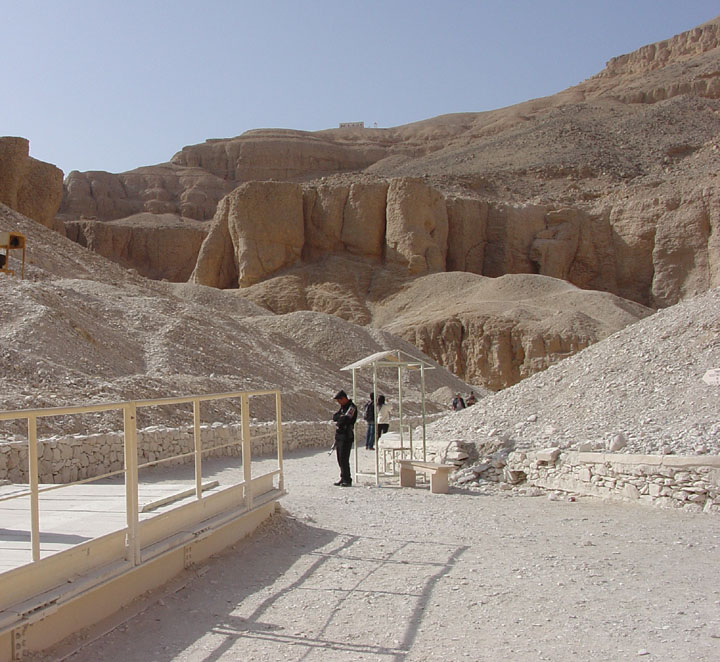
The temples were meant to honor the dead king, perhaps through eternity. In
fact, they might more resemble a modern foundation or trust. They were intended
to keep the king’s cult alive, guaranteeing him eternal deification, and not
simply through festivals.
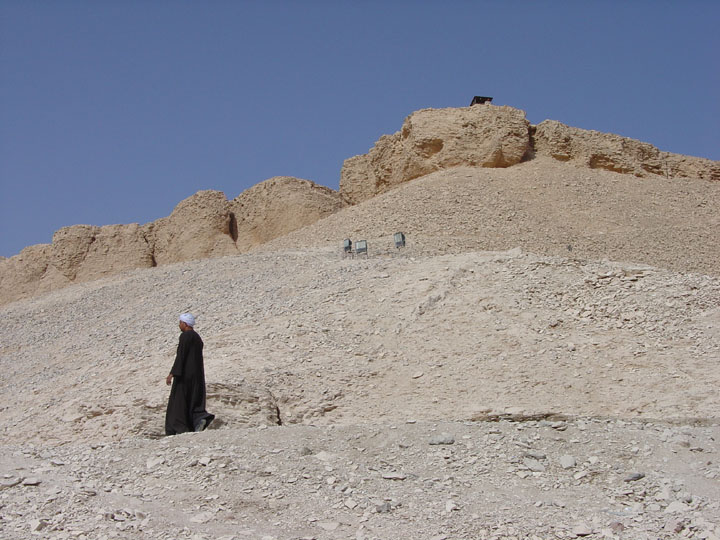
over these hills are the Valley of the Queens
South of the Valley of the Kings, and closer to the Nile lies the Valley of the Queens. This area is inappropriately named, because it houses family members of the kings, including both males and females, and even some high officials. There are about 80 numbered tombs in this area, probably the most famous of which is that of Queen Nefertari.
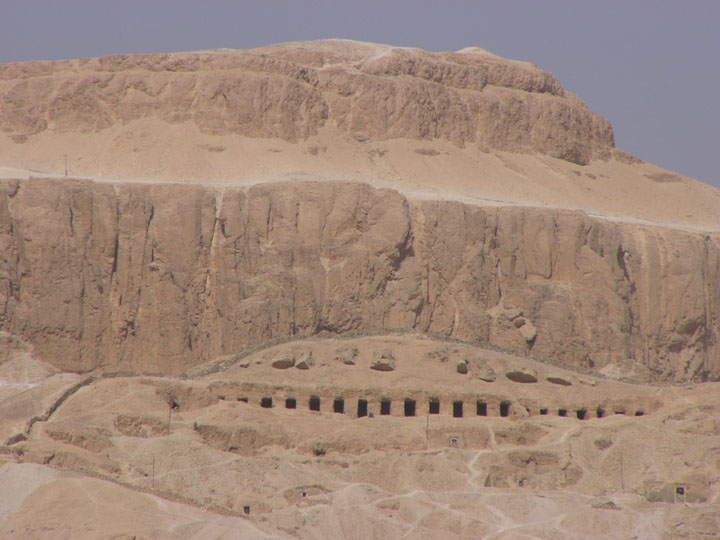
outline of the Temple of Hatshepsut
on the hill
(not an often visited site, since the killing of the bus load of tourists there,
in 1997)
My Photos of the Temple of Hatshepsut from 1957
Colossi of Hemnon
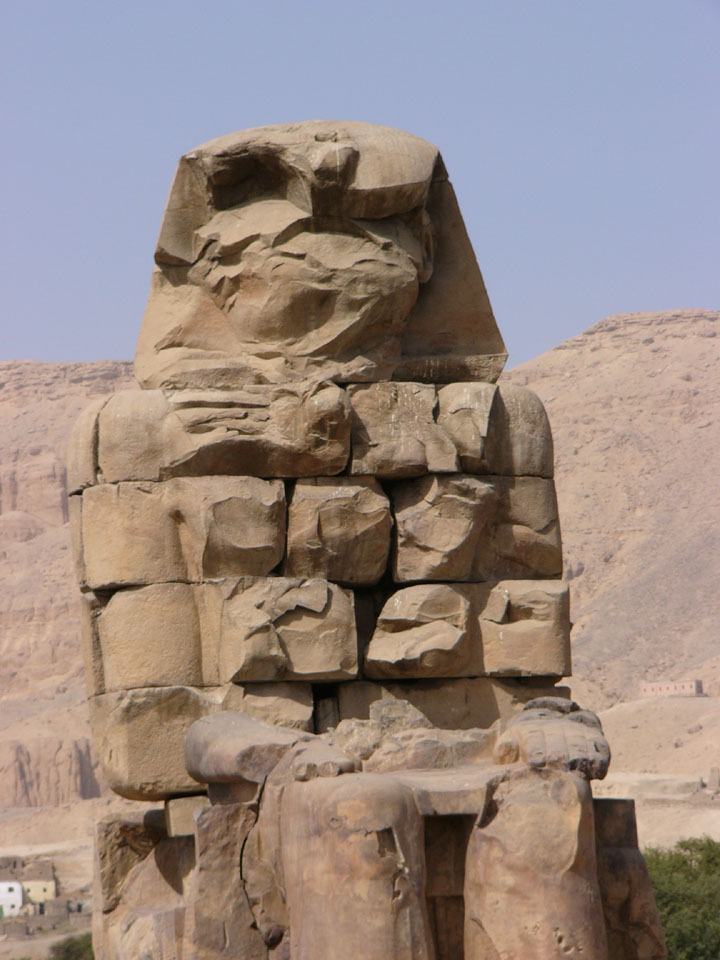
not only a massive head
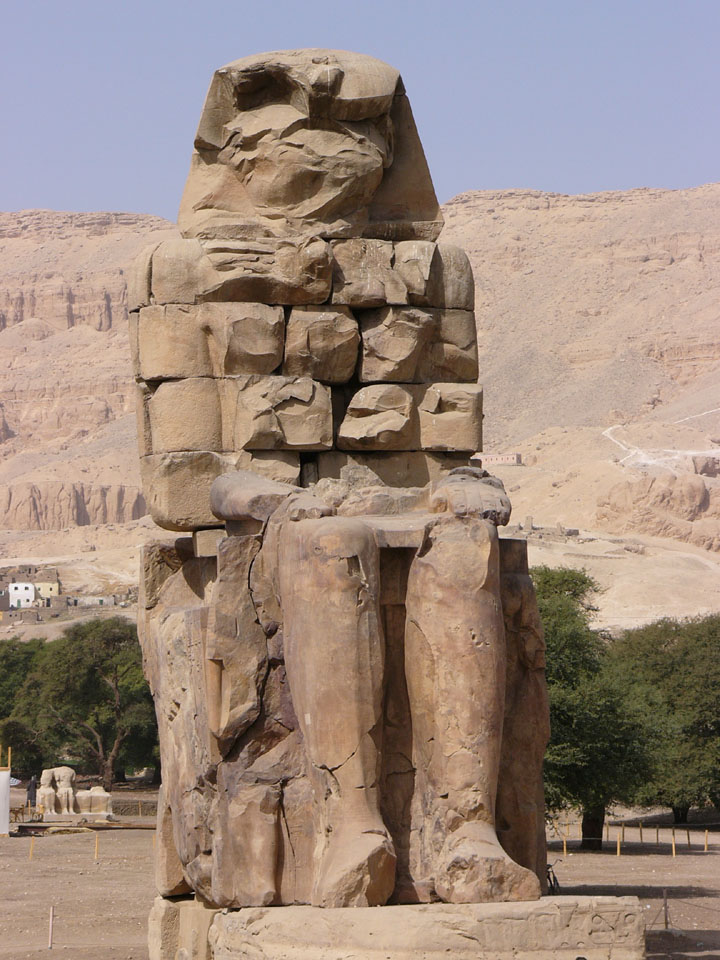
but a massive body

and then there are two
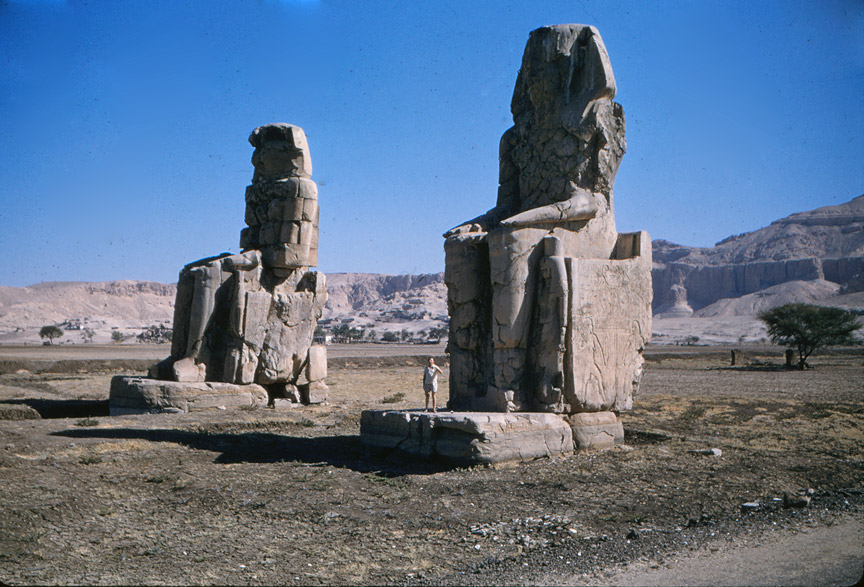
photo from 1957
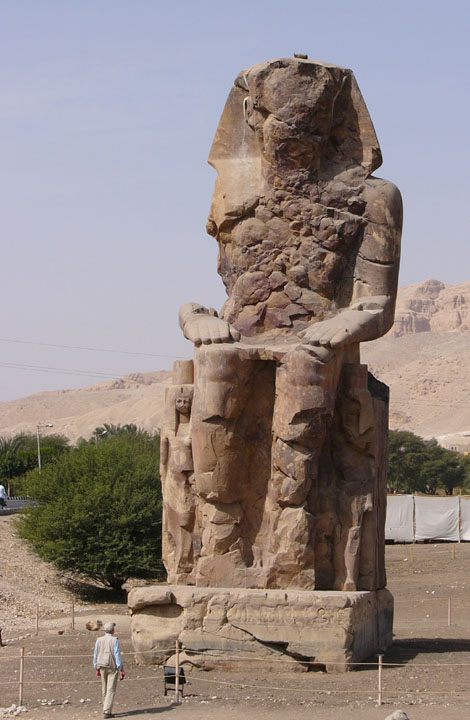
are what remains of a great funerary temple of Amenhotep III
(much looted and destroyed since it was within the flood plain of the Nile
river)

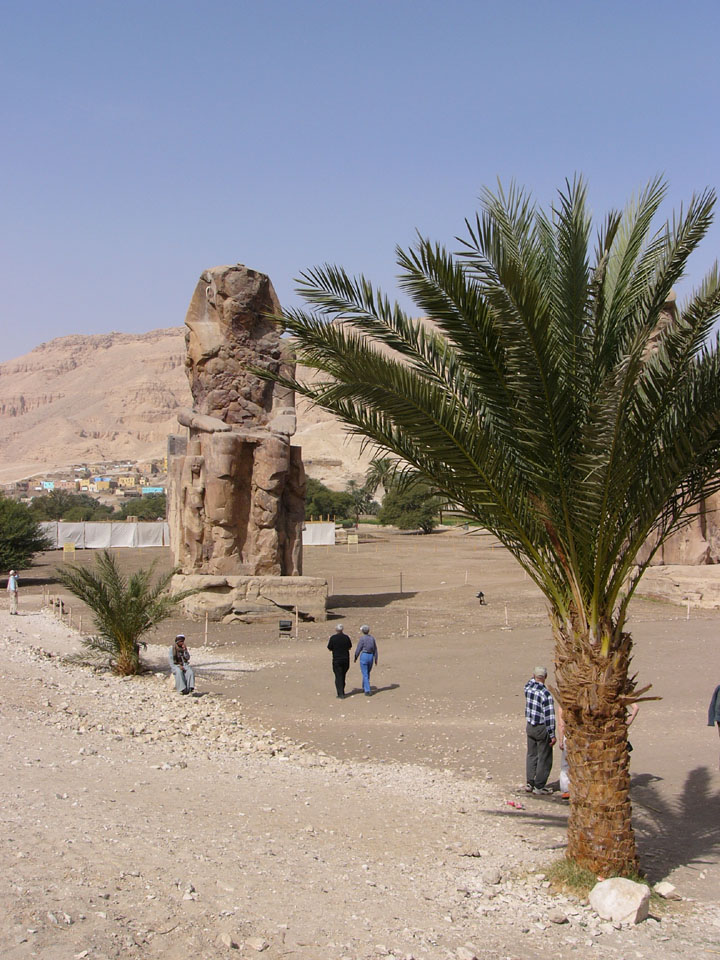
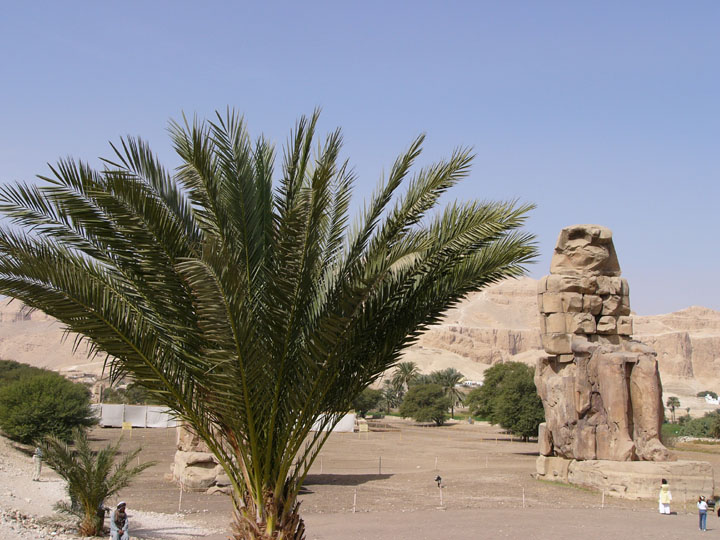
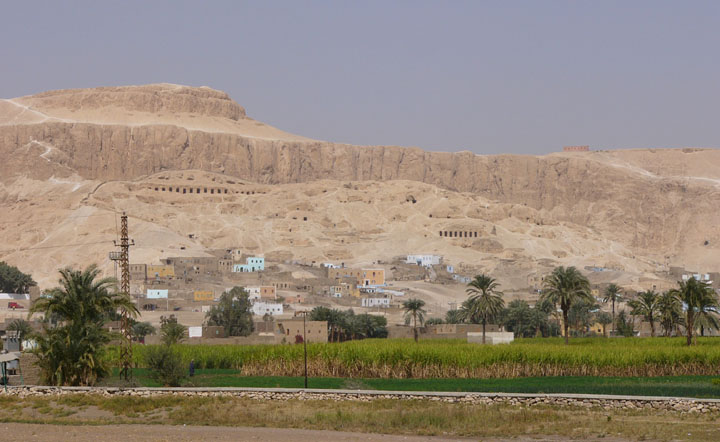
looking toward the Temple of Hatshepsut